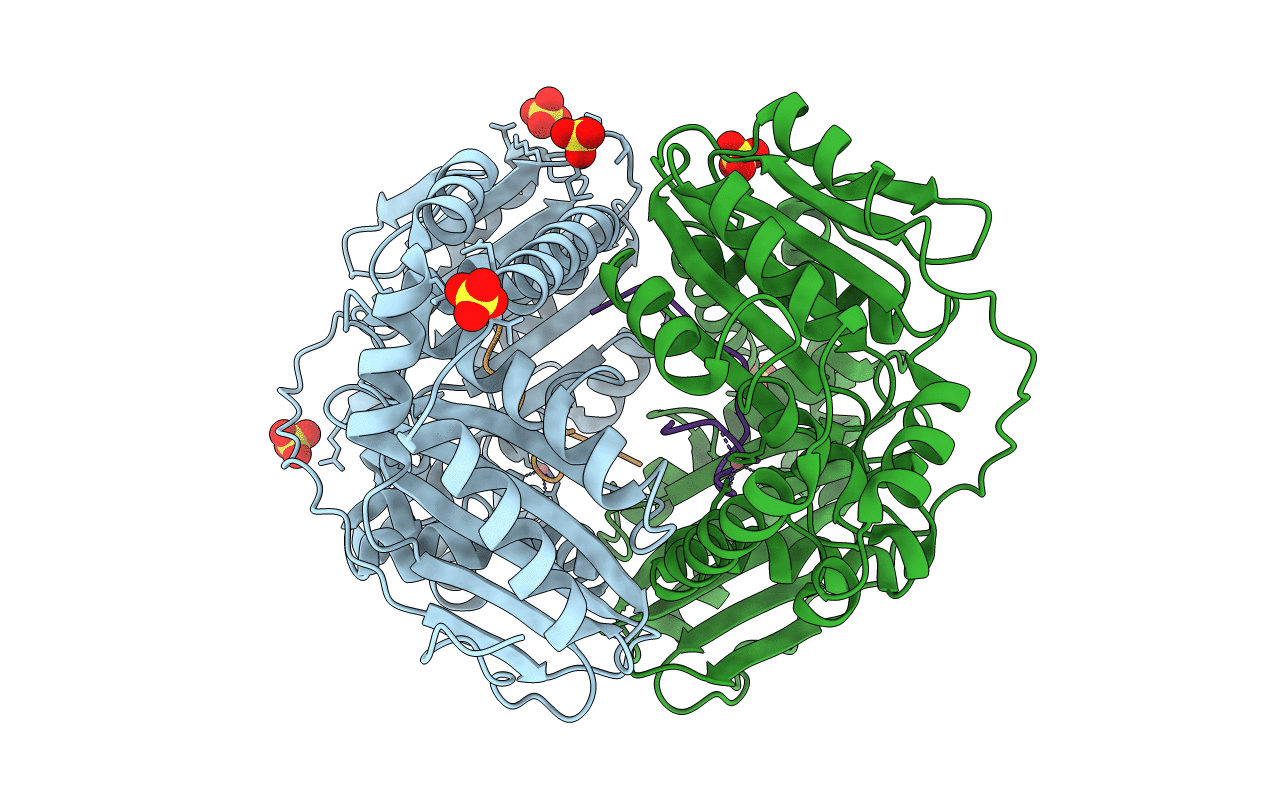
Deposition Date
2009-05-07
Release Date
2009-12-08
Last Version Date
2023-09-06
Entry Detail
Biological Source:
Source Organism:
Bacillus halodurans C-125 (Taxon ID: 272558)
Host Organism:
Method Details:
Experimental Method:
Resolution:
2.70 Å
R-Value Free:
0.26
R-Value Work:
0.19
R-Value Observed:
0.19
Space Group:
C 2 2 21


